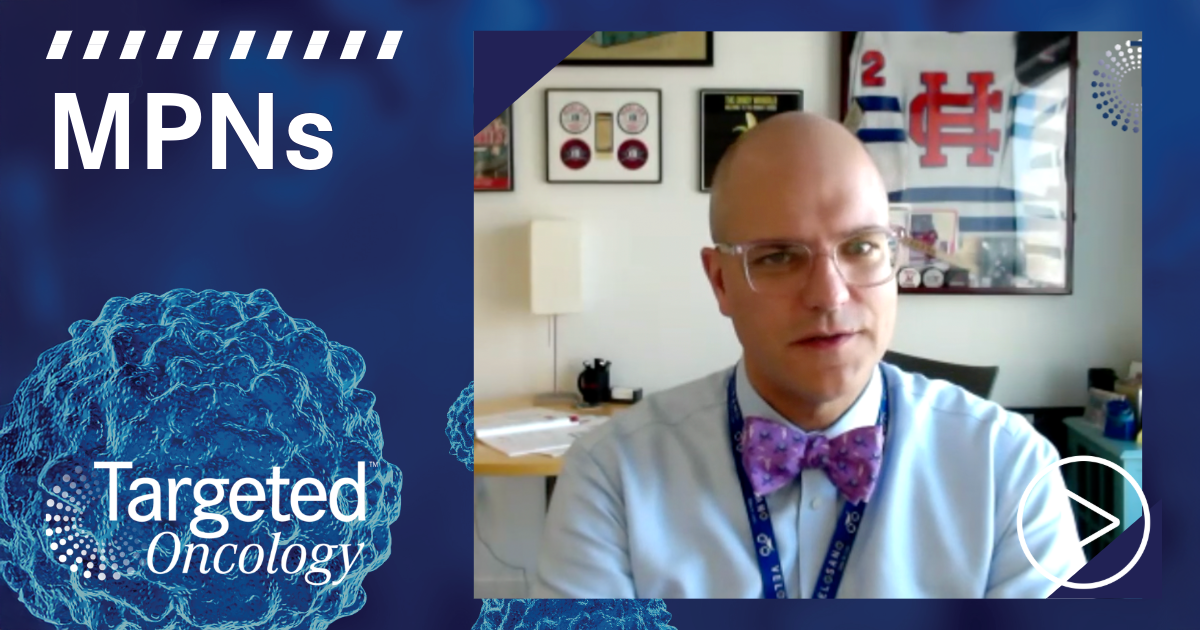In an interview, Aaron T. Gerds, MD, hematologist-oncologist at Cleveland Clinic and assistant professor in the Department of Medicine, School of Medicine, at Case Western Reserve University, discusses the unmet needs in the treatment of essential thrombocythemia (ET), as well as novel methods for approaching disease treatment.
ET has very few commercially available treatments today. There is only 1 FDA-approved drug for ET: anagrelide (Agrylin). However, anagrelide is often inadequate, with some prospective trials even suggesting that hydroxyurea is superior, according to Gerds. Providers will also use interferons off-label.
This year’s European Hematology Association (EHA) conference featured a significant abstract on ropeginterferon for ET, marking a big year for ET research. ET is usually a less-studied disease because it is less common than other hematologic malignancies, and patients often have very good survival rates, sometimes approaching that of the normal population.
However, Gerds emphasizes that this doesn’t mean ET is without risk. The disease can progress to acute leukemia, also known as blast-phase myeloproliferative neoplasm (MPN), or to myelofibrosis, which involves an enlarging spleen, increased symptom burden, and cytopenias. ET itself can cause many symptoms for patients, especially those with higher platelet counts. These include constitutional symptoms like headaches, fevers, night sweats, and weight loss. Patients can also have an increased risk of bleeding events due to acquired von Willebrand syndrome. Therefore, effective therapies are lacking, and the consequences of this disease need to be addressed.
To Gerds, what providers and patients really need are therapies that routinely change the course of the disease. While the average survival for an ET patient is good, it’s not perfect, and there are high-risk patients. Developing new therapies that can truly modify the disease, either eliminating it or at least lengthening the runway for these patients, would be incredibly important.
As konwledge about MPNs grows, research is focusing less on morphologic features—like too many red cells in polycythemia vera (PV), too many platelets in ET, or scar tissue in the bone marrow in myelofibrosis. Instead, researchers are thinking more about the driver mutation. Patients with MPNs typically have 1 of 3 driver mutations: JAK2, calreticulin (CALR), or MPL. Clinically, these three entities behave differently.
CALR-mutant protein is external to the cell. When the protein mutates, it gets stuck on the thrombopoietin receptor, Gerds explains. As the receptor is built and pushed to the cell surface, the mutated protein remains, activating the pathway. Because it’s external, it’s amenable to different forms of attack, such as monoclonal antibodies, bispecific antibodies, cellular therapy, CAR T-cells, or even vaccine therapy.
This discovery has led to a clear pivot towards these types of treatments for this subset of MPN patients. A straightforward approach is to develop a monoclonal antibody that targets this external protein, similar to how there are monoclonal antibodies for almost everything else, like rituximab (Rituxan) in hematology. Monoclonal antibodies can disrupt JAK-STAT signaling, effectively starving these cells of the signal they need to divide, grow, and survive. It may also recruit immune cells, leading to some cell death via the immune system.
